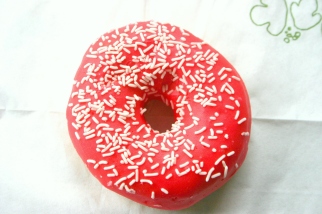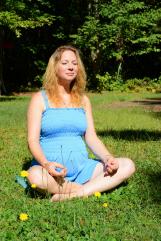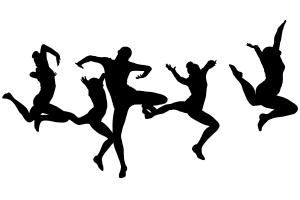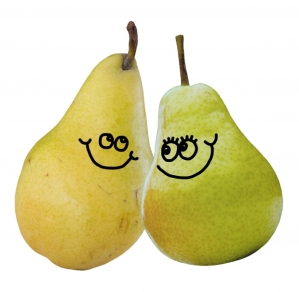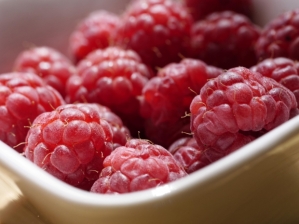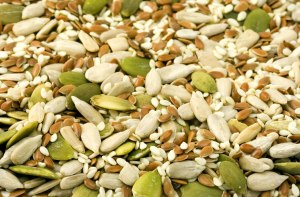I adore fall, and public speaking makes me very uncomfortable. And I realize that these two statements seem completely unrelated.
I love everything about fall— the crunch of an apple fresh from the tree, the crispness of a cool October morning, the smell of fire in a fire place— but anyone who has spent any amount of time with me between late September and early November knows that I have one favorite: the buttery yellow, pumpkin orange, and cranberry red of autumn leaves. The sight makes my soul vibrate.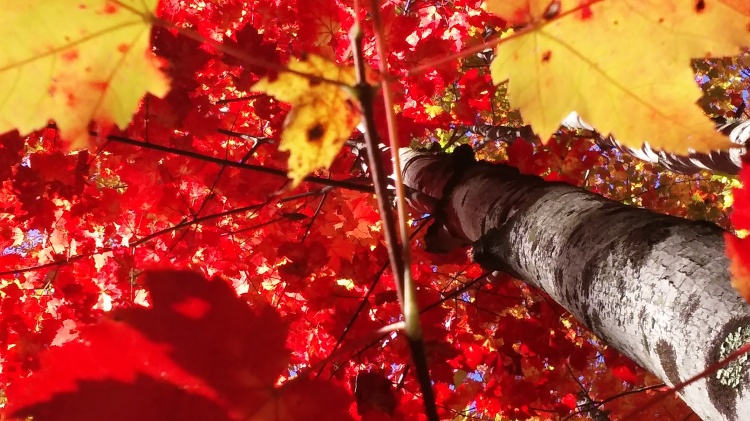
I know that for some, the coming of autumn signals an end— of summer, of shorts, of vacations— but for me fall has always signaled something fresh and new: school years, teachers, projects, and moves to new cities. Nothing epitomizes revelation and creation, both metaphorically and biologically, like the changing fall leaves.
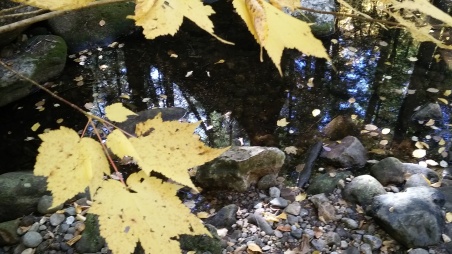 All summer long, the tree basically punches the clock doing its workaday routine. It soaks up rays and pumps sunshine through chlorophyll to produce carbs and plump its trunk. Around the time the fall television season premieres, the nighttime gains a few minutes of darkness and sparks an entire metamorphosis. That’s when the colorful magic happens. The green face the tree had presented to the world fades, revealing yellow and orange personalities that were hiding incognito the whole time. Some, but not all trees have a talent that’s only brought to light, if you will, by the stress of trying to stock up on goodies before winter hits. If it’s one of the lucky ones that can, it concocts then displays spanking new red and purple pigments to protect it while it works overtime at the harvest.
All summer long, the tree basically punches the clock doing its workaday routine. It soaks up rays and pumps sunshine through chlorophyll to produce carbs and plump its trunk. Around the time the fall television season premieres, the nighttime gains a few minutes of darkness and sparks an entire metamorphosis. That’s when the colorful magic happens. The green face the tree had presented to the world fades, revealing yellow and orange personalities that were hiding incognito the whole time. Some, but not all trees have a talent that’s only brought to light, if you will, by the stress of trying to stock up on goodies before winter hits. If it’s one of the lucky ones that can, it concocts then displays spanking new red and purple pigments to protect it while it works overtime at the harvest.
 This fall, as you gaze at the swashes of color painting the hillsides and lining the streets, I challenge you to look beyond the hues.
This fall, as you gaze at the swashes of color painting the hillsides and lining the streets, I challenge you to look beyond the hues.
What skills, talents, and dreams are lying dormant but just below the surface in you?
Is there something that you’ve secretly wanted to share or become, but the day-to-day grind or personal insecurities have kept you from allowing its expression?
Is there anything that you hold onto out of habit- an old commitment, a toxic relationship, a belief or behavior that no longer serves you- that if you let go of it, would make room for something different and beautiful to surface?
How can you turn a stressor into an impetus for change?
What could you do to nourish and sustain yourself through the new adventure ahead?
As I mentioned before, public speaking makes me very uncomfortable. I still tend to wake with a slightly sick feeling on random days weeks before I have to present, despite attending over a year of Toastmasters, having spoken in front of a number of groups, and having been interviewed on both local and national television. I’ve always been more comfortable one on one, socially and professionally, but there are things I want to do that require standing up and opening my mouth in front of more than one person or my pets. I know that some of my discomfort stems from lingering tendrils of perfectionism. I keep thinking I’ve successfully weeded it out only to rediscover shoots pushing up through my subconscious and winding around my psychic trunk like kudzu. I’m ready to prune this time. Embracing the wisdom of the changing leaves, I’m willing to let go of the need to be perfect, and I’m committed to doing a number of speaking engagements and workshops this fall. The truth is, I’m really excited about the topics and the activities, and I’m eager to get out of my own way.
In the big cycle of life, the season of change will approach again and again, by choice or by chance. In the middle of that sometimes uncomfortable juncture between what is and what will be, I invite you to go within and find what you need to reach outwards and upwards. Then embrace transformation. Go for the gold, and what the heck, maybe toss in a few bold splashes of red, while you’re at it.  Be well.
Be well.
To learn more about me or what I do, please visit http://www.lisenaugle.com.
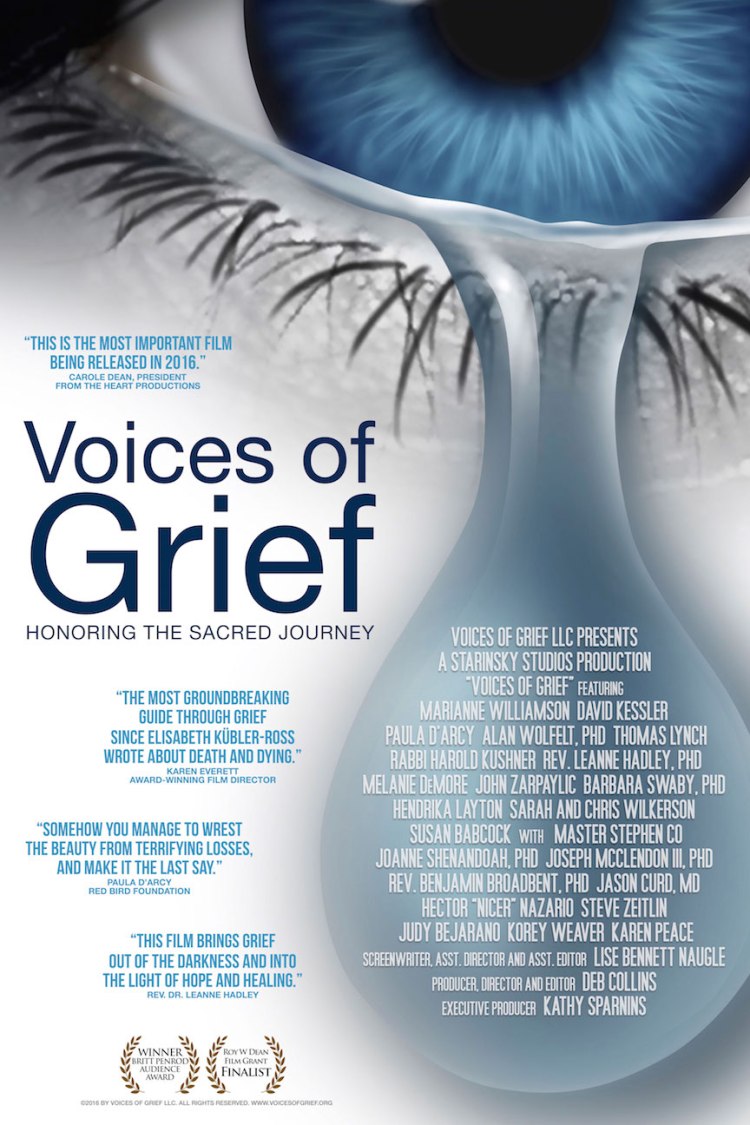
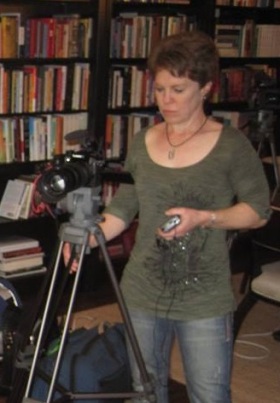

 Last winter some friends and I attended a skijoring tournament in a quaint Colorado mountain town. Skijoring is a crazy event in which a horse and rider run at full gallop pulling a snow skier at the end of a rope much like a water skier. The horse pounds down the center of the road while the skier careens from one side to the other to jump a series of ramps and finally joust a set of rings. As we watched the competitors, a young girl and her family stood beside us at the edge of the sidewalk. After a while, the girl squatted down and patted together a tiny snowman and placed him in the middle of the sidewalk. A few pedestrians milling about passed and smiled, a little unsure of what to think, before moving on. Then a boy about twelve years old walked by and kicked it down. A hearty round of “boos” rose from everyone who saw what had happened.
Last winter some friends and I attended a skijoring tournament in a quaint Colorado mountain town. Skijoring is a crazy event in which a horse and rider run at full gallop pulling a snow skier at the end of a rope much like a water skier. The horse pounds down the center of the road while the skier careens from one side to the other to jump a series of ramps and finally joust a set of rings. As we watched the competitors, a young girl and her family stood beside us at the edge of the sidewalk. After a while, the girl squatted down and patted together a tiny snowman and placed him in the middle of the sidewalk. A few pedestrians milling about passed and smiled, a little unsure of what to think, before moving on. Then a boy about twelve years old walked by and kicked it down. A hearty round of “boos” rose from everyone who saw what had happened.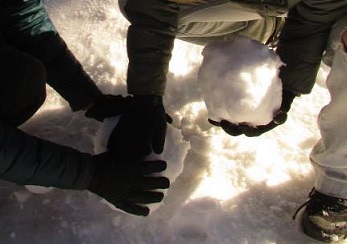 As pedestrians approached, they slowed. They smiled. They changed course so as not to disturb the little guys. They laughed. They took pictures. Couples holding hands lifted their clasped hands up and over the frozen family as they passed, and everyone along the sidewalk acted as guardians of the little individuals.
As pedestrians approached, they slowed. They smiled. They changed course so as not to disturb the little guys. They laughed. They took pictures. Couples holding hands lifted their clasped hands up and over the frozen family as they passed, and everyone along the sidewalk acted as guardians of the little individuals.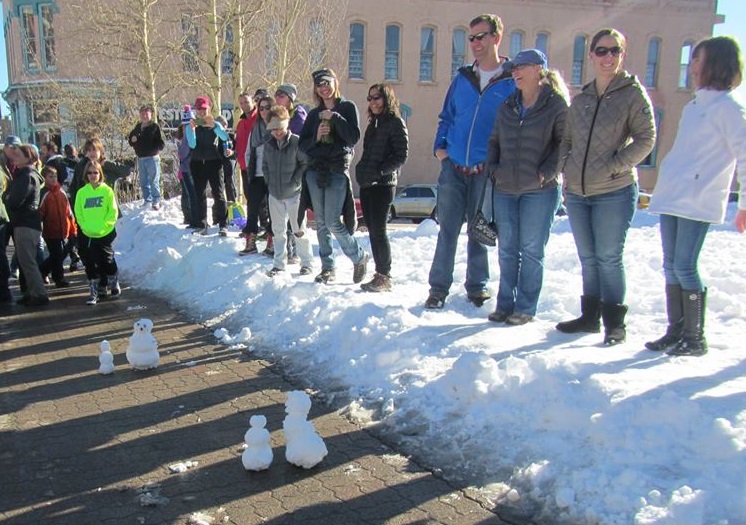
 You’ve experienced the stress hungries. You’re twenty minutes into rush hour traffic that’s not rushing anywhere while flashbacks from your boss’s daily tantrum loop in your head like an ice cream truck’s tune. Your heart pounds and your hands squeeze the life from the steering wheel. The next exit promises a donut shop and suddenly all you want is warm, round, sugar glazed yumminess.
You’ve experienced the stress hungries. You’re twenty minutes into rush hour traffic that’s not rushing anywhere while flashbacks from your boss’s daily tantrum loop in your head like an ice cream truck’s tune. Your heart pounds and your hands squeeze the life from the steering wheel. The next exit promises a donut shop and suddenly all you want is warm, round, sugar glazed yumminess.